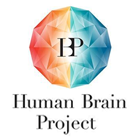
Guus Smit, Huibert Mansvelder and Sabine Spijker will contribute to the Human Brain Project, one of it’s two EU FET Flagship projects. The project will receive 1 billon euros, the biggest research cash award ever granted within the EU.
The European Commission has officially announced the selection of the Human Brain Project (HBP) as one of its two FET Flagship projects. The new project will federate European efforts to address one of the greatest challenges of modern science: understanding the human brain.
The selection of the Human Brain Project as a FET Flagship is the result of more than three years of preparation and a rigorous and severe evaluation by a large panel of independent, high profile scientists, chosen by the European Commission.
 In the coming months, the partners will negotiate a detailed agreement with the Community for the initial first two and a half year ramp-up phase (2013-mid 2016). The project will begin work in the closing months of 2013.
In the coming months, the partners will negotiate a detailed agreement with the Community for the initial first two and a half year ramp-up phase (2013-mid 2016). The project will begin work in the closing months of 2013.
Guus Smit, Huibert Mansvelder en Sabine Spijker from CNCR and six other Dutch scientists (Erasmus, Groningen, Utrecht, CWI, Maastricht, Radboud Universiteit) contribute to the daring enterprise. Their common share in this project (including the NL matching) amounts to more than 8 M€ altogether.
Federating more than 80 European and international research institutions, the Human Brain Project is planned to last ten years (2013-2023). The cost is estimated at 1.19 billion euros. The project will also associate some important North American and Japanese partners. It will be coordinated at the Ecole Polytechnique Fédérale de Lausanne (EPFL) in Switzerland, by neuroscientist Henry Markram with co-directors Karlheinz Meier of Heidelberg University, Germany, and Richard Frackowiak of Centre Hospitalier Universitaire Vaudois (CHUV) and the University of Lausanne (UNIL).
Scientific portrait of the Human Brain Project

Central to the Human Brain Project is Information and Computing Technology (ICT). The project will develop ICT platforms for neuroinformatics, brain simulation and supercomputing that will make it possible
– to federate neuroscience data from all over the world
– to integrate the data in unifying models and simulations of the brain
– to check the models against data from biology
– and to make them available to the world scientific community.
The ultimate goal is to allow neuroscientists to connect the dots leading from genes, molecules and cells to human cognition and behavior.
A novel medical informatics platform will federate clinical data from around the world. It will allow medical researchers to unlock clinically valuable information
and to incorporate it in computer models of disease. The goal is to develop techniques for the objective diagnosis of the brain’s diseases, to understand their underlying mechanisms and to speed up the search for new treatments.
Finally, the HBP will build new platforms for “neuromorphic computing‚ and “neurorobotics‚. Researchers can so develop new computing systems and robots based on the architecture and circuitry of the brain. The new systems will use detailed knowledge of the brain to address critical problems facing future computing technology: energy efficiency, reliability, the huge difficulties involved in programming very complex computing systems.
The HBP will fund independent scientists to use the new platforms for their own research, reserving a substantial part of its budget for this purpose. In brief, the HBP will create a CERN for the brain.
Webiste Human Brain Project: http://www.humanbrainproject.eu/index.html